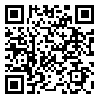BibTeX | RIS | EndNote | Medlars | ProCite | Reference Manager | RefWorks
Send citation to:
URL: http://jamlu.liau.ac.ir/article-1-1307-en.html
Design a Bus Transit Network is an important problem of the Urban Management. There are a large number of variables that must be considered to design a bus transit network. These variables are used to reach a set of goals such as accessibility, maximum coverage, reduction of waiting time and decrease operational costs and number of transfer between line stops. Design a Bus Transit Network is NP-hard problem. This problem doesn't have optimal solution in large scale. The general way to design Bus Transit Network is as follows: Search space of feasible solutions are reduced then final network is constructed by notice to urban priorities. In this paper, we proposed a new method to design a Bus Transit Network. Our approach is a Statistical learning method. It extracts knowledge of human experts from existing Bus Transit Networks. Then this knowledge is applied to reduce search space and make a Bus Transit Network. The learned model of our approach is constructed by several statistical learning method and their hybrids. In this paper, we applied Naïve Bayesian, two regression based methods and hybrid version of them to build model. Evaluation of the learned model is based on Accuracy, False Positive and True Positive criteria. The values of these criteria show high confidence of our approach. In this paper, we applied Tehran Bus Transit Network as our data set.
Received: 2016/08/15 | Accepted: 2016/08/15 | Published: 2016/08/15
| Rights and permissions | |
 |
This work is licensed under a Creative Commons Attribution-NonCommercial 4.0 International License. |




